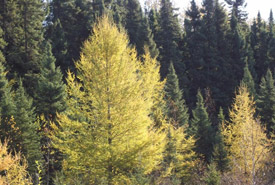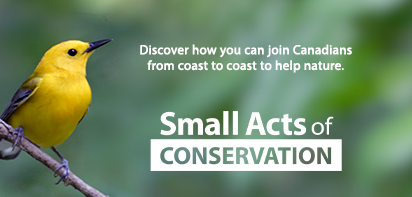
American larch (Photo by Superior National Forest)
American larch
American larch, also known as tamarack, is a medium to large coniferous tree that is also deciduous. This means that unlike most other conifer species, whose needles remain in place all year long, this tree’s needles fall to the ground in autumn and grow back in spring. The only other conifers that lose their needles in the winter are the western and subalpine larch, which both live in the forests Alberta and BC.
What does it look like?
American larch can reach up to 20 metres high. It has a straight, narrow trunk, an open, pyramidal shape and horizontal branches. Young trees have smooth, grey bark, while that of mature trees is scaly and reddish-brown. The species’ needles are pale green, slender and grow in clusters of up to 30 needles. American larch needles turn brilliant yellow in the fall.
Where does it grow?
American larch grows in forests ranging from central Alaska, Yukon and British Columbia, to Newfoundland and south to Minnesota, Illinois and Pennsylvania. It grows in moist, acidic, well-drained soils, and it is often found in bogs, fens and swamps. The species grows best in full sun and does not tolerate fully shaded areas.
What is its ecological significance?
A variety of animals eat American larch seeds, seedlings and bark. It can be the dominant tree in some types of wetlands.
What is this species’ conservation status?
According to the International Union for Conservation of Nature, American larch is ranked as least concern, with a widespread, abundant population and a stable population trend. It is also common in every Canadian province and territory.
What is NCC doing to protect habitat for this species?
The Nature Conservancy of Canada (NCC) stewards and protects many properties across the country where American larch grows. These include the Kurian property in Manitoba, Minesing Wetlands in Ontario, Busenius property in Saskatchewan, Fishing Lake property in Nova Scotia and the island of Grand Manan in New Brunswick.




